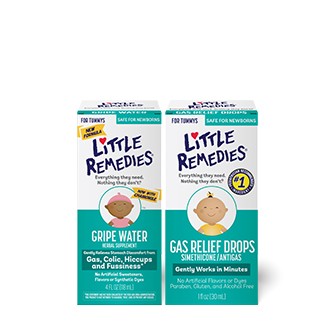
When your infant is smiling, cooing and sleeping well, parenting feels magical. On the flip side, if your baby cries uncontrollably for hours at a time, it can make you feel helpless and desperate for answers. Am I doing something wrong? Is something wrong with my baby?
I first remember hearing the term “colicky baby” when I was a child in the early 80s. We were visiting my little cousin who was inconsolable. I kept asking my mom why she was crying so much and my mom explained it was colic. When I became a mom for the first time in 2004, that term resurfaced. This time it was my child’s pediatrician telling me my son had colic.
He would smile and coo at strangers in the grocery store, but for hours a day at home he would cry and cry. And some days, I was so exhausted and worried, I would cry too. So what is colic? And how do you cope with it? Here are five things you should know about colic:
Definition of Colic
Well, this is a tricky concept to grasp. Oddly enough, doctors around the world who are highly esteemed and respected in pediatrics do not necessarily agree on what makes a baby colicky. Back in the early 70s, moms who took their healthy, well-fed babies to the doctor because of the inconsolable crying spells were simply told they had colicky babies, with no real explanation as to why. It’s hard to believe that forty years later, depending on which articles you read or what your doctor thinks, you might hear the exact same thing. Crying = colic?
Tummy Pain
When it comes to healthy babies who exhibit excessive crying, one school of thought is stomach pain may be the underlying culprit. Sometimes babies are lactose intolerant, so they have the same digestive issues with both formula and breast milk. Even small things like hiccups or sucking on a pacifier can interfere in baby’s digestion and cause gas bubbles.
Signs of Belly Pain
It’s time to play detective and think about your baby’s body language and cries. If you read distress signs, especially after a feeding, she may do things like clench her body, arch her back, pull her legs up or make fists. All of these involuntary positions and movements can be a sign of belly pain. You can also listen to your baby’s cries for signs. High pitched piercing and grating cries can indicate pain.
Easing the Discomfort
You can switch formula brands and try different foods to see if that helps. You can also use products like gripe water, derived from ingredients like ginger seed extract and fennel seed extract. Many parents dealing with colic swear by gripe water because it can provide quick relief for many babies struggling with belly issues. Little Remedies® Gripe Water can be administered up to 6 times in a 24-hour period and doses can be repeated after 30 minutes, which makes it ideal for feeding schedules.
This Too Shall Pass
Studies show that colic tends to appear in babies at around two weeks old, so if it seems like you brought a happy baby home from the hospital and now that same baby has morphed into an unhappy baby, you’re probably right. But remember, babies with colic don’t cry forever. Colic tends to dissipate on its own around 3-4 months. Until then, keep calm and parent on!
Tummy woes can make for a fussy baby. Find out what you can do about hiccups, gas bubbles and colic to ease the symptoms here.









